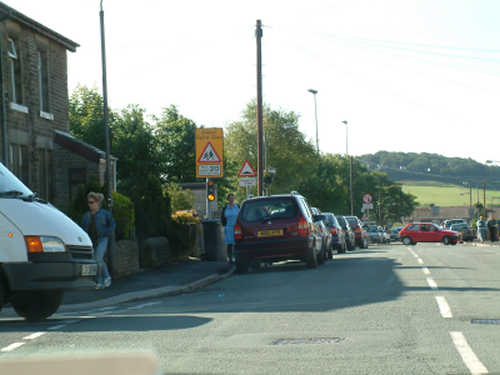Emerging left - Introduction
The DVSA define emerging as 'leaving one road to join or cross another'.
This can include roundabouts. Although you won't need to give a briefing for roundabouts during your exam, you will need to deal with any roundabout issues that arise during the drive.
Read this section in conjunction with the DriverActive information about T-junctions emerging.
Your goal:
To ensure that your learner understands the rules and procedures at T-junctions and can emerge safely from a side road to turn left.
learner's goals:
To understand the need for and demonstrate appropriate actions at T-junctions including the ability to:
- Use mirrors appropriately on approach
- Time signals correctly without misleading
- Position correctly on approach and arrival
- Regulate speed correctly when approaching allowing for road and traffic conditions
- Select an appropriate gear for the turn without coasting
- Stopping when necessary to give priority
- Recognise open and closed junctions
Note that these are generic lesson goals. Individual learners will have specific personal goals and other goals related to different aspects of learning but still relevant to the lesson. The lesson goals shown here are to help you to break down the process and skill into it's component parts.
Instructor's observation
 The most common instructional error encounter at T-junctions is that where the instructor pays too much attention to the road and not enough attention to the driver.
The most common instructional error encounter at T-junctions is that where the instructor pays too much attention to the road and not enough attention to the driver.
This possibly comes about because of well meaning but misguided comments from trainers who say things like "Just imagine that you are driving the car from the passenger seat"
There are two issues here:
- There is no passenger seat! The left seat is an 'instructor's seat' a place of work. You are not a passenger.
- You are not driving the car.
When a driver arrives at the junction it's natural to look right left and right to ensure that the road is clear. However, when you approach a junction in the instructor's seat your first task is to look across to see what the driver is doing.
If you are busy looking at the road your learner might emerge without proper observation – the fact that the road is clear is totally irrelevant at this point. Not only must the road be clear, the learner must have seen that the road is clear and made his/her decision based on that observation (they should not emerge simply 'because the instructor tells them to').
You must watch the driver like a hawk. When, and only when, the driver has looked effectively you can take a quick, last-second, glance to make sure that the road is safe to enter.
If you are watching the driver effectively you will keep the car safe at all times - the way you do this is simply by telling him/her to stop if they try to move without looking properly.
If you are uncertain about how to watch the driver effectively, revise the information here.
Early stages
For the first few junctions with a new learner you will usually need to help with judgment. Simply make sure that the learner checks in each direction before you do.
For example, instruct your learner to look to the right, then look to the right yourself and discuss what you see; before looking to  the left, instruct your learner to look to the left, then look to the left yourself and discuss what you see... and so on.
the left, instruct your learner to look to the left, then look to the left yourself and discuss what you see... and so on.
Experienced learner
If your learner is not looking effectively you can give the appropriate instruction or prompt with a question. Never allow your learner to emerge until you are 100% certain that full and effective observation has been completed.
This must always be the rule, whether or not the road is clear.
In fact, if you are really doing your job properly, your learner should always know that the road is clear before you do.
Considering the safety aspect for a moment - initially it doesn't matter whether the new road is clear or not because you are not going to let the car move until proper observation has been made.
Next: Step 2 - Demonstration example